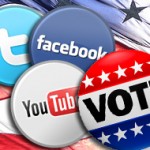It is not necessarily that young people are uninterested in civic involvement; it is that they do not feel that current communication channels allow them to express themselves. This finding from Gerodimos (2012) is interesting because it challenges the common “young people don’t care about anything these days” complaint we hear so often today. It appears that young people want to learn how they can make a difference without having to conform their entire lives to a given civic issue. Organizations should attempt to appeal to them affectively, especially through visual material such as images and videos (no wonder Pinterest is so popular!). Gerodimos’ finding that young people relate better to “real people” reminds me of the debate in the marketing literature about whether a brand’s personality should match a consumer’s actual or ideal self. Recent findings (i.e., Malar, Krohmer, Hoyer, and Nyffenegger 2011) indicate that actual self-congruence has the greatest impact on emotional brand attachment. More than ever, it seems that consumers resonate with media that focuses on the average person rather than a glorified celebrity.
Tufekci and Wilson’s (2012) study of social media use among participants in the Tahrir Square protests is fascinating. I am surprised that even a quarter of their interviewees were women and find it intriguing that women were significantly more likely to use Twitter to communicate about the protest. Clearly, social media allows women to have an opinion, even though they may not have any other opportunities to participate in political activity. Social media turned many of the protest participants into citizen journalists and gave them the courage and social support they needed to participate in the protests. When you think about the power of social media in these terms, it really is quite amazing what it can do.
Loveland and Popescu (2011) find that forum discussions tend to be negative and full of personal attacks. This reminds me of Brian’s blog post from last week, which questioned whether consumers engaging in political discussions on SNSs is really civic engagement or merely trash talk. Loveland and Popescu’s findings seem to suggest that much of the discussion on online forums is trash talk. It seems reasonable to think that what occurs in forums also holds true on SNSs, however, as mentioned by the authors, anonymity may encourage negativity on forums, whereas it is more difficult to be anonymous on SNSs. But I agree with Brian; it does seem like an awful lot of political discussion on SNSs is trash talk, so I wonder if consumers are starting to care less about anonymity.
Finally, I very much enjoyed Rupert Murdoch’s (2006) quote, “to some in the traditional media business, these are the most stressful of times. But to us, these are great times. Technology is liberating us from old constraints, lowering key costs, easing access to new customers and markets, and multiplying the choices we can offer.” In order to survive, corporate media has no choice but to take such an approach. More new media does not have to result in the death of traditional media; it simply means that old media must change with the times and work with new media to offer a dynamic product. As mentioned by Burgess and Burns (2011), Twitter hashtags make it possible for ordinary citizens, political actors, and professional journalists to participate in civic engagement. As users express their own opinions, they will also discuss their opinions on content posted by traditional media sources. Traditional media should view this increased access to “real” people who are participating in the discussion through social media as a major opportunity, not a threat.

